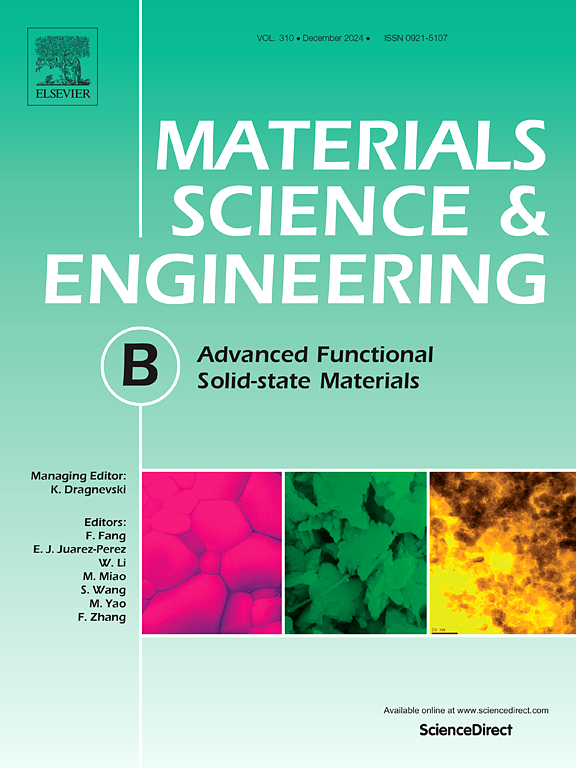Investigations on the structural, magnetic and spin interactions of Mn0.5Zn0.5ErxFe2-xO4 ferrites synthesized by co-precipitation method
IF 3.9
3区 材料科学
Q2 MATERIALS SCIENCE, MULTIDISCIPLINARY
引用次数: 0
Abstract
This study investigates the impact of Er3+ doping on the structural and magnetic properties of Mn0.5Zn0.5ErxFe2−xO4 (x = 0.0–0.1) nanoparticles synthesized by co-precipitation. X-ray diffraction (XRD), Fourier-transform infrared spectroscopy (FTIR), and scanning electron microscopy (SEM) confirm the formation of a single cubic spinel phase. Er3+ substitution leads to a lattice parameter increase from 8.3827 to 8.4197 Å, attributed to Er3+’s larger ionic radius relative to Fe3+. SEM analysis reveals a reduction in nanoparticle size from 33.1 to 25.1 nm with increased Er3+ content. Magnetic measurements show a decline in maximum magnetization from 32.46 to 15.04 emu/g at 10,000 Oe, indicating a decrease in net magnetization with Er3+ doping, accompanied by negligible coercivity and retentivity. Electron paramagnetic resonance (EPR) spectroscopy further characterizes spin dynamics, including peak-to-peak line width, resonance field, Lande’s g-factor, spin concentration, and relaxation time, highlighting significant changes in magnetic properties due to Er3+ doping.
求助全文
约1分钟内获得全文
求助全文
来源期刊

Materials Science and Engineering: B
工程技术-材料科学:综合
CiteScore
5.60
自引率
2.80%
发文量
481
审稿时长
3.5 months
期刊介绍:
The journal provides an international medium for the publication of theoretical and experimental studies and reviews related to the electronic, electrochemical, ionic, magnetic, optical, and biosensing properties of solid state materials in bulk, thin film and particulate forms. Papers dealing with synthesis, processing, characterization, structure, physical properties and computational aspects of nano-crystalline, crystalline, amorphous and glassy forms of ceramics, semiconductors, layered insertion compounds, low-dimensional compounds and systems, fast-ion conductors, polymers and dielectrics are viewed as suitable for publication. Articles focused on nano-structured aspects of these advanced solid-state materials will also be considered suitable.
 求助内容:
求助内容: 应助结果提醒方式:
应助结果提醒方式:


